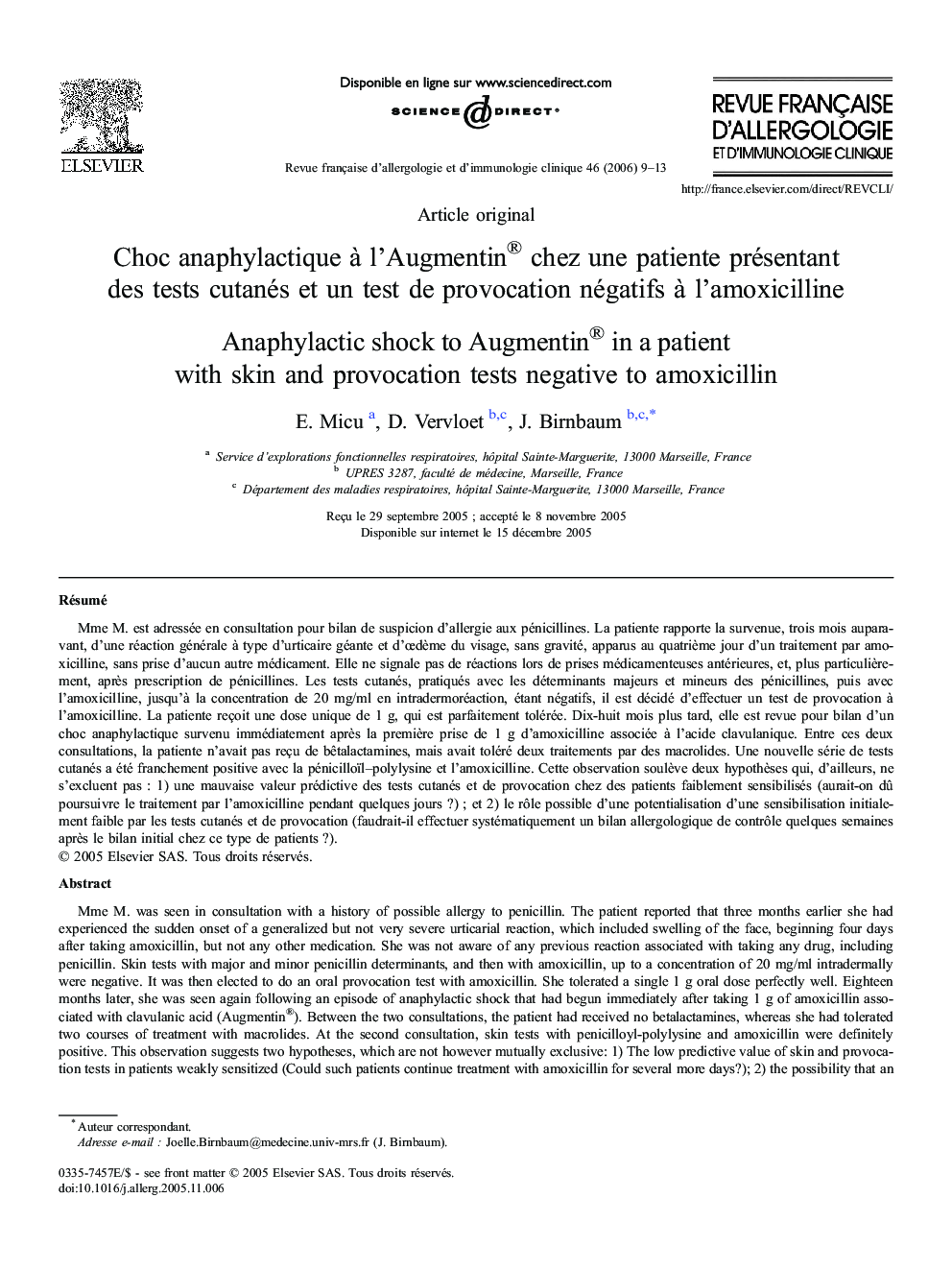| Article ID | Journal | Published Year | Pages | File Type |
|---|---|---|---|---|
| 2770461 | Revue Française d'Allergologie et d'Immunologie Clinique | 2006 | 5 Pages |
RésuméMme M. est adressée en consultation pour bilan de suspicion d'allergie aux pénicillines. La patiente rapporte la survenue, trois mois auparavant, d'une réaction générale à type d'urticaire géante et d'œdème du visage, sans gravité, apparus au quatrième jour d'un traitement par amoxicilline, sans prise d'aucun autre médicament. Elle ne signale pas de réactions lors de prises médicamenteuses antérieures, et, plus particulièrement, après prescription de pénicillines. Les tests cutanés, pratiqués avec les déterminants majeurs et mineurs des pénicillines, puis avec l'amoxicilline, jusqu'à la concentration de 20 mg/ml en intradermoréaction, étant négatifs, il est décidé d'effectuer un test de provocation à l'amoxicilline. La patiente reçoit une dose unique de 1 g, qui est parfaitement tolérée. Dix-huit mois plus tard, elle est revue pour bilan d'un choc anaphylactique survenu immédiatement après la première prise de 1 g d'amoxicilline associée à l'acide clavulanique. Entre ces deux consultations, la patiente n'avait pas reçu de bêtalactamines, mais avait toléré deux traitements par des macrolides. Une nouvelle série de tests cutanés a été franchement positive avec la pénicilloïl–polylysine et l'amoxicilline. Cette observation soulève deux hypothèses qui, d'ailleurs, ne s'excluent pas : 1) une mauvaise valeur prédictive des tests cutanés et de provocation chez des patients faiblement sensibilisés (aurait-on dû poursuivre le traitement par l'amoxicilline pendant quelques jours ?) ; et 2) le rôle possible d'une potentialisation d'une sensibilisation initialement faible par les tests cutanés et de provocation (faudrait-il effectuer systématiquement un bilan allergologique de contrôle quelques semaines après le bilan initial chez ce type de patients ?).
Mme M. was seen in consultation with a history of possible allergy to penicillin. The patient reported that three months earlier she had experienced the sudden onset of a generalized but not very severe urticarial reaction, which included swelling of the face, beginning four days after taking amoxicillin, but not any other medication. She was not aware of any previous reaction associated with taking any drug, including penicillin. Skin tests with major and minor penicillin determinants, and then with amoxicillin, up to a concentration of 20 mg/ml intradermally were negative. It was then elected to do an oral provocation test with amoxicillin. She tolerated a single 1 g oral dose perfectly well. Eighteen months later, she was seen again following an episode of anaphylactic shock that had begun immediately after taking 1 g of amoxicillin associated with clavulanic acid (Augmentin®). Between the two consultations, the patient had received no betalactamines, whereas she had tolerated two courses of treatment with macrolides. At the second consultation, skin tests with penicilloyl-polylysine and amoxicillin were definitely positive. This observation suggests two hypotheses, which are not however mutually exclusive: 1) The low predictive value of skin and provocation tests in patients weakly sensitized (Could such patients continue treatment with amoxicillin for several more days?); 2) the possibility that an initially weak sensitization was potentiated by the skin and provocation tests (Is it advisable to systematically do a second allergy workup several weeks after the first one to exclude the possibility of sensitization in this type of patient?).
